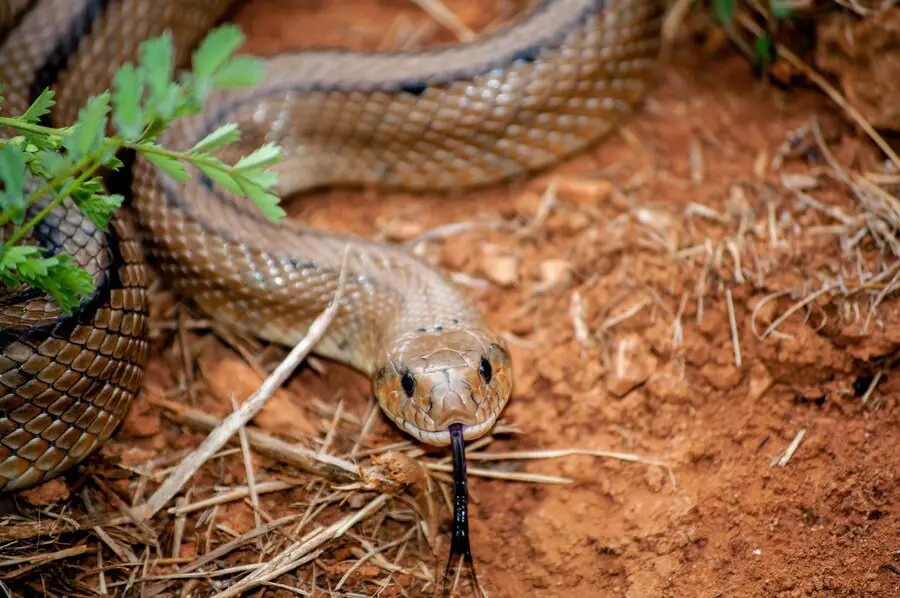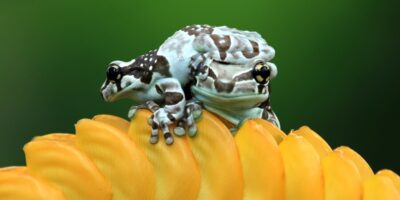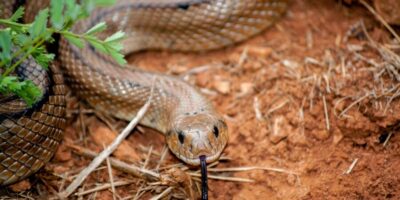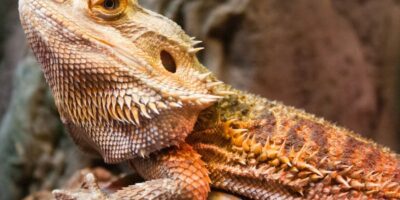Ball pythons have become incredibly popular as pets because of their unique patterns, gentle nature, and ease of care compared to other snake species. They make great companions, can live for several decades, and have captured the hearts of reptile enthusiasts worldwide. The thriving community of ball python enthusiasts shares knowledge, experiences, and adorable snake pics, adding to their popularity.
Understanding Ball Python Behavior
In the wild, ball pythons are native to sub-Saharan Africa, where they dwell in various habitats such as grasslands, forests, and savannas. They are primarily nocturnal creatures, which means they are most active during the night. This behavior helps them avoid predators and regulate their body temperature in these warmer regions. During the day, ball pythons seek shelter in burrows, rock crevices, or dense vegetation to stay cool and hidden. When it comes to their behavior, ball pythons are generally solitary creatures, except during mating season.
Ball pythons are known for their calm and relaxed nature, and they often spend a significant amount of time curled up in their favorite hiding spots. It’s not unusual to find them coiled up in their cozy hides, enjoying some well-deserved rest. However, ball pythons do have moments of activity, especially during the nighttime when they may explore their enclosure, stretch their bodies, or even go for a leisurely slither. These bursts of activity can vary from snake to snake, as individual personalities and environmental factors can play a role.
Factors Influencing Ball Python Activity
- Temperature and Lighting
The temperature plays a crucial role in their overall metabolism and activity levels. Ball pythons are most active and exhibit optimal metabolic function when kept within their preferred temperature range. Generally, they thrive in temperatures ranging from 75-85°F (24-29°C) during the day and a slight drop at night. When the temperature is too low, their metabolism slows down, and they become less active. Conversely, when it’s too hot, their metabolism speeds up, leading to increased energy expenditure and potential stress. Ball python owners need to provide proper thermal gradients in their enclosure, allowing the snakes to thermoregulate and choose their preferred temperature spots. This way, they can maintain a healthy metabolism and overall well-being.
In their natural habitat, these snakes experience fluctuations in natural light, which helps regulate their internal clocks and activity patterns. By mimicking this lighting cycle in their captive environment, it can contribute to their overall well-being. Offering a regular day-night light schedule with periods of darkness at night can help establish a sense of routine for their daily activities and encourage more natural behaviors. Additionally, providing proper lighting sources, such as low-intensity UVB bulbs, can aid in vitamin D synthesis, which is crucial for calcium absorption and overall health.
- Habitat and Enrichment
A suitable enclosure should mimic their natural environment as closely as possible. This includes providing hiding spots like caves or snug hides where they can retreat and feel secure. These hiding spots not only give them a sense of safety but also reduce stress levels by providing a cozy space to relax and unwind. Along with hiding spots, adding climbing branches or other forms of vertical enrichment allows ball pythons to exercise their muscles, explore their surroundings, and engage in natural behaviors like climbing and perching. Enrichment is essential for promoting mental stimulation and preventing boredom, which can lead to better overall health and reduced stress for these amazing creatures.
- Feeding and Digestion
After a meal, ball pythons experience an increase in metabolism and body temperature as they digest. This can temporarily make them more active, exploring and basking. It’s a natural response that helps them efficiently break down and absorb nutrients from their meal. This increased activity subsides once digestion is complete. This is a critical time for their bodies to efficiently break down and absorb nutrients from their meal. So, it’s important to give them space and let their bodies do their thing during this crucial time.
- Age and Personality
Young ball pythons are typically more active than older ones, but each snake has its personality. As they grow and mature, their activity levels may naturally decrease due to factors like metabolism and development. However, it’s crucial to observe and understand your individual snake’s preferences. Some may be naturally more active and curious, while others prefer a more relaxed lifestyle. So, age can influence activity levels, but it’s important to cater to your snake’s unique needs and preferences in their enclosure.
Common Signs of Abnormal Activity
Abnormal behavior in ball pythons can be a cause for concern and may indicate underlying health issues or environmental factors that need attention.
- Refusing to eat: While ball pythons can go through periods of fasting, consistently refusing to eat for an extended period could be a sign of stress, illness, or incorrect husbandry conditions.
- Frequent or prolonged hiding: While it’s normal for ball pythons to seek hiding spots, excessive hiding or prolonged periods spent in hiding could suggest stress, discomfort, or a lack of proper environmental conditions.
- Consistently erratic or restless behavior: If your ball python is excessively pacing, constantly trying to escape, or displaying irregular movements, it could indicate stress or an uncomfortable enclosure setup.
- Unexplained weight loss: Sudden or significant weight loss, despite proper feeding and husbandry, may be a sign of underlying health issues such as parasites or metabolic disorders.
- Inactivity or lethargy: While ball pythons can be naturally sedentary, prolonged periods of inactivity or lethargy combined with a loss of appetite may indicate illness or stress.
- If you observe any of these behaviors or anything else that seems abnormal for your ball python, it’s important to consult with a qualified reptile veterinarian who can provide a proper diagnosis and guidance to ensure the well-being of your snake friend.
To keep your ball python happy and healthy, make sure their enclosure has the right temperature range. They need a warm side around 88-92°F (31-33°C) and a cool side around 78-82°F (26-28°C). This way, they can choose the temperature they like. It’s also important to maintain a humidity level of 50-60% for shedding and overall well-being. To keep them entertained, add hiding spots, branches, rocks, and other safe decorations for them to explore.
Tips for Managing Ball Python Activity Levels
They’re ectothermic, which means they rely on their environment for body temperature. Make sure their enclosure has a temperature gradient, with a warm side around 88-92°F (31-33°C) and a cool side around 78-82°F (26-28°C). This way, they can choose where to hang out! Also, keeping the humidity around 50-60% helps with shedding and overall health. Fill their space with fun stuff like hiding spots and decorations, as it gives them the chance to explore and stay entertained.
Maintaining a consistent feeding schedule is vital for the health of your ball python. To keep the ball python healthy, make sure to stick to a consistent feeding schedule. They usually eat every 1-2 weeks, depending on their size. Offer prey that’s the same width as their body. Keep the feeding area calm and quiet to reduce stress. Watch for signs of stress or health issues like loss of appetite, weight loss, abnormal shed, or unusual behavior.
Conclusion
In conclusion, understanding and managing the activity levels of your ball python is crucial for their overall well-being. By closely monitoring their behavior and being aware of any changes, you can quickly address any potential issues and ensure they receive proper care. Providing a suitable enclosure with proper temperature gradients, enrichment options, and a consistent feeding schedule are all essential elements in keeping your ball python happy and healthy.




